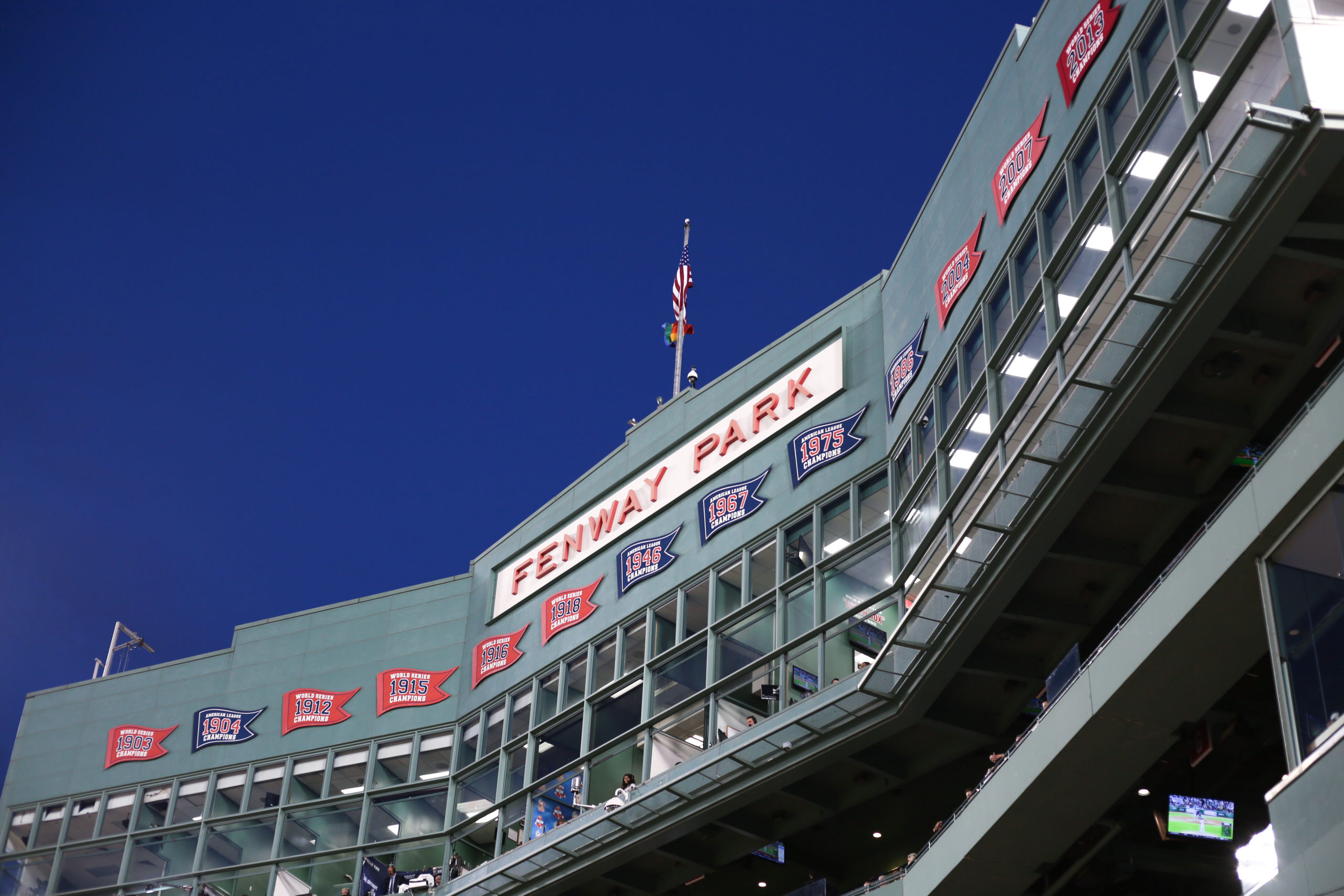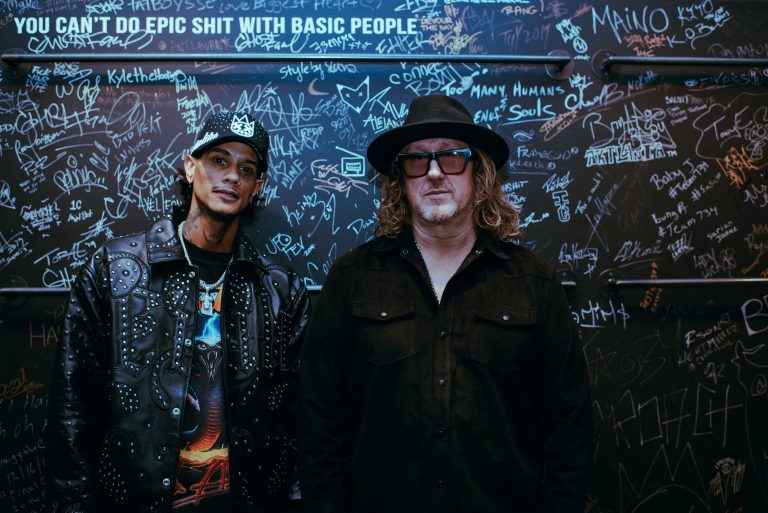The venerable home of the Red Sox has survived not only a relentless ballpark boom, but a new wave of disregard even for relatively new venues. There’s a reason for it that few people outside of Boston understand.
By the time you read this, there may be another World Series about to take place in the ballpark that has sat in Beantown for over a century. The Red Sox have, after all, shown a palpable disregard for supposed curses in the last decade and a half.
When you think about it, it’s no small miracle that Fenway Park is still standing. Lately, you don’t even have to think about it all that much. As ballpark architecture changes at a dizzying rate, Fenway insistently puts its foot down, asserting its unassailable right to continue hosting the world’s greatest game. It remains the immovable object that triumphs over the irresistible force.
Over the last three decades, as municipalities and teams realized there were billions to be made in corporate suites, some romantic and profoundly historic temples of baseball met with the wrecking ball. Most distressingly, even Tiger Stadium, old Yankee Stadium and Comiskey Park were unceremoniously felled by baseball economics. It’s hard to imagine it now, but there indeed was a time when Fenway was in the crosshairs too…and the idea of replacing it had plenty of support.
In recent years, the discarding of venues considered shiny by Fenway standards makes it even more remarkable that the ballpark continues to defy its demolition. Teams are now departing from delightful and appealing baseball homes that most fans remember opening. Turner Field in Atlanta lasted just 20 seasons as the home of the Braves, magnificent Globe Life Park in Arlington will be replaced in 2020 after just 26 seasons, and the Diamondbacks have begun the process of exiting Chase Field in Phoenix, another ballpark just 20 seasons old.
Think about that. The Metrodome outlived these outstanding ballparks.
The sports venue boom, one could easily argue, is now completely out of control. For absurd reasons, at least the publicly stated ones, teams are tossing aside perfectly nice baseball settings. The Braves actually cited “traffic” as a problem with Turner Field, as if it’s somehow possible to smoothly shoehorn 20,000 cars into any parking lot on earth in the space of a couple of hours. (Spoiler alert: the traffic at SunTrust Park is far worse. At least Turner Field had a viable public transit option.)
It’s not all that difficult anymore to conceive that Oriole Park at Camden Yards, the venue that started all of this, could itself be threatened with extinction in the not too distant future. As perfect for baseball as Camden is, the Orioles can’t even give away tickets these days…and they’re literally doing just that.
The stunning ballpark creations that arose in response to the phenomenal success of the architectural wonder in Baltimore have been warmly received by spectators. This is especially true in places like Philadelphia, where fans sat in a concrete donut designed for football for 33 seasons. Citizens Bank Park is, by any fathomable measure, a superior venue to Veterans Stadium.
Many of the new ballparks were designed with the charm, or more correctly, the “old time features” of places like Fenway, like neighborhood-necessitated dimensions and distinctive visual landmarks…but without the small seats, grossly insufficient leg room (did people really top out at five-foot-four in 1912?), obstructed views, and fuming in 3 MPH traffic to find exorbitantly priced parking.
With all due respect to Camden Yards, which truly was executed flawlessly, the modern amenities babble is exactly where all of the new venues miss the point.
The home of the Red Sox was never meant to be a place where millennials gather for craft beer tasting, or where patrons sample gourmet sushi from an executive chef, or where fans loudly cheer a mascot race. It’s not that Fenway doesn’t have extras geared to folks that are less than fanatical about baseball. It does. But they’re not emphasized here. There is nowhere near the outreach to “casual fans” at Fenway like there is in nearly every other ballpark in America.
Fenway Park is difficult. It’s the most challenging ballpark in baseball, both to get into and to get to. Most games sell out and require fans to pay an overinflated secondary market rate, seek out skilled haggler scalpers or wait in a long line on game day. Parking is scarce and costly, with cars even placed on top of one another in smaller garages. Trains leading to Kenmore station are stuffed well beyond capacity with sweaty fans.
Choosing the wrong seat at Fenway can lead to the annoying experience of a support pole blocking a portion of the field from view. A fan’s only alternative, at least at that price, is a distant outfield seat in the glaring sun. Oh, and those Grandstand seats? Flimsy wooden chairs, just 15 inches wide, with an inch-wide armrest to share with your neighbor. You must be kidding.
For all of the reverence for Fenway Park from baseball fans everywhere, no one would tolerate a newer facility with so many ridiculous flaws. Yet that grand old girl in Boston with the huge green wall in left field remains at the top of so many fans’ bucket list destinations. A ballpark that, on fan experience alone, is utterly inferior to nearly every other venue in professional baseball is filled to capacity every night.
Not even the strikingly beautiful structures in Pittsburgh and San Francisco could ever hope to achieve that. It’s a charm that a less dedicated baseball fan, accustomed to cushioned seats and easy parking, would consider a detriment.
In A League Of Their Own, Tom Hanks has the perfect response to Geena Davis finally succumbing to how difficult the game of baseball is: “It’s supposed to be hard. If it wasn’t hard everyone would do it. The hard is what makes it great.”
This place isn’t for amateurs. Fenway Park is literally designed to weed out the casual fan. If you don’t love Red Sox baseball enough to endure that cramped, stiff seat with no view of right field, you don’t have to go. Not to worry. Someone will take your place…and that someone is exactly the kind of fan baseball needs more of anyway.
Why else on earth would fans tolerate extortionately priced tickets and parking, uncomfortable seats with blocked views, and far too many outfield seats in 2018? Why do Red Sox fans not only put up with all of this, but even sing collectively and enthusiastically about how good times never seemed so good?
Because Red Sox fans get baseball.
They get the incomparable thrill of investing their heart in a baseball team, and seeing a game winning hit bounce off of that green wall.
Maybe that simplifies it too much. Try this.
See if you can find someone who was there to witness Ted Williams’ 502-foot smash that landed in a seat now painted red to commemorate the occasion. Actually, that might be difficult, given that it happened in 1946. Maybe you’d have better luck finding someone who was in the ballpark when Carlton Fisk’s home run ball clanged off of the foul pole. That was only in 1975.
Still having trouble? Then try finding someone who was present when Big Papi’s game winner cleared the fence in the 12th, after journeyman first baseman Kevin Millar had duly warned everyone against allowing a Red Sox victory that night. That shouldn’t be impossible.
Found someone? Great. Ask them how much they paid for their ticket, or where they parked, or what the entertainment was between innings.
Chances are good the answers won’t be high on the list of what they remember most about the experience.
Baseball’s history is a long, ongoing, and endlessly gripping page turner full of otherworldly moments. Nowhere is this more true than in Boston, from the devastating heartbreaks of an 86-year hex to the beyond spectacular glory of 2004. As Big Papi’s hit sailed over the fence and the Sox escaped the jaws of elimination, setting in motion the greatest comeback in sports history, no one in a partially obstructed seat that night would have traded the inconvenience to have missed it.
The Sox fans that overcame the considerable challenges to be inside Fenway Park on those fateful historic days considered it unquestionably worth the aggravation. Just as they continue to do by the millions every summer.
All the obstructions, expensive parking, crowded trains, and no great need for any ballgame sustenance other than a hot dog on mushy white bread. It all makes the point that no retractable roof, amenity-laden facility for baseball could ever make. For all of its flaws, because of its flaws, Fenway Park is absolutely everything a ballpark should be.












